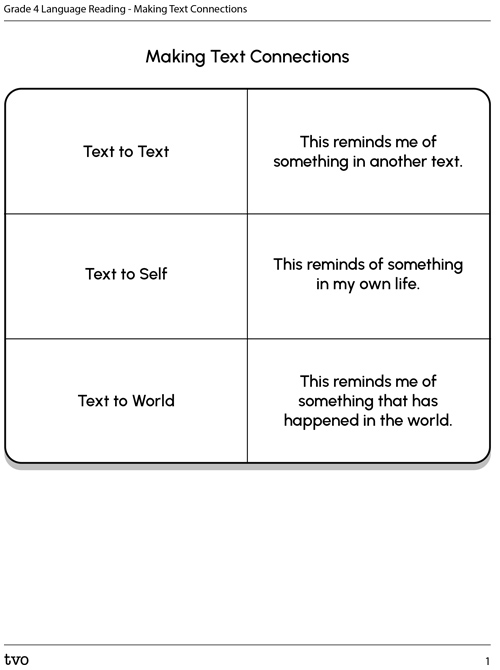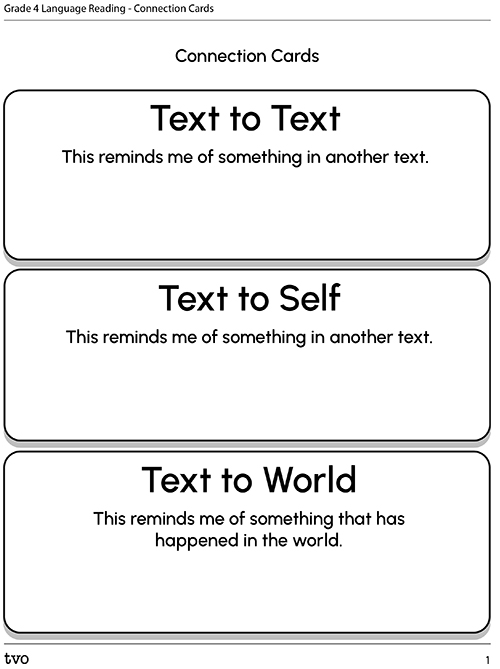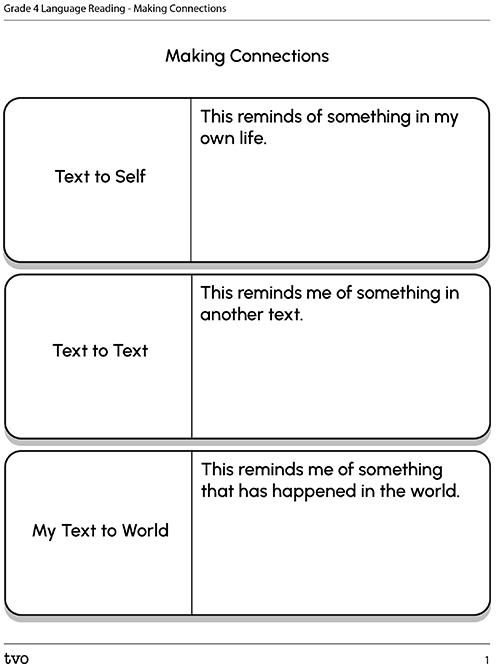Minds On
Reading strategies
Brainstorm
Reading comprehension strategies
What are some of the strategies you use to understand different texts? For example, think about a book that you have recently read. If possible, with a partner, use the brainstorming organizer to record your strategies. You can use a digital or printed copy in order to record your ideas or use speech to text.
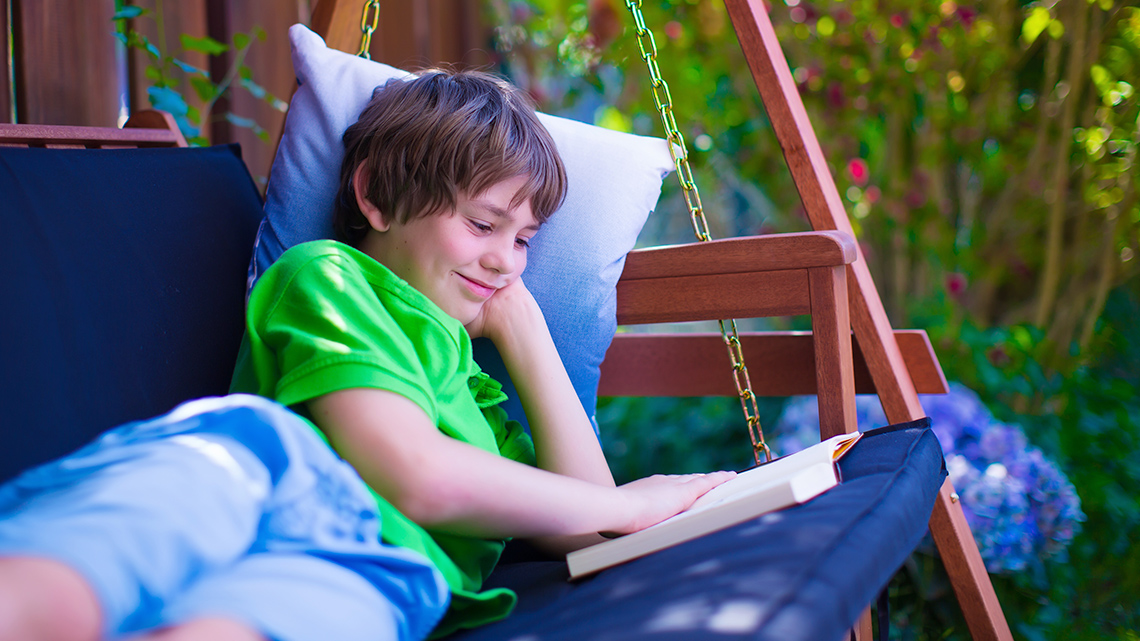
Share your reading strategies brainstorming chart with a partner, if possible. Do you use similar or different strategies?
Complete the Brainstorming Web in your notebook or using the following fillable and printable document.
Press the ‘Activity’ button to access the Brainstorming Web.
There are many strategies that we can use, and we can use them in combination with one another. Here are a few examples of reading comprehension strategies. Is there any other strategy you would add to the chart?
Question
Ask questions to help you understand the text.
Infer
Use clues from the text and your own knowledge or schema
and clues to understand.
Visualize
Create images in your mind to help you understand the
text.
Synthesize
Using my own ideas and background knowledge to help me
understand a new idea.
Summarize
Summarize the text to help you focus on the main ideas
and important details.
Make Connections
Connect the ideas in the text to what you
already know.
Add your strategies to the fillable chart below, or record your ideas using another method of your choice.
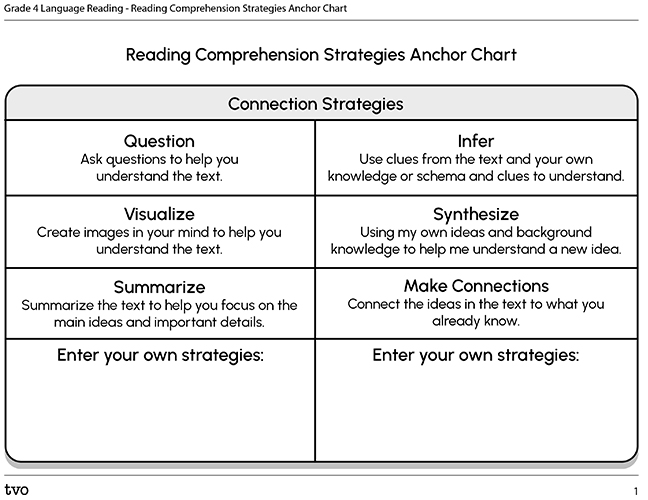
Press the Activity button to access the Reading Comprehension Strategies Anchor Chart.
Activity (Open PDF in a new tab)Action
Text-to-text, text-to-self, and text-to-world
Now that we have explored some of the different strategies used to understand texts, let's focus on one of them: how we make connections. You probably noticed everyone uses different strategies to create understanding. When it comes to connecting with a text, everyone’s experience is also different. We usually categorize or sort connections into three main categories:
Text-to-Text – I can connect this to something in another text.
Text-to-Self – I can connect this to something in my own life.
Text-to-World – I can connect this to something that has happened in the world.
Examine the Making Text Connections printable document.
Read I Wish I Saw a Butterfly or select a text of your choice. For example, you may choose a short story, poem, news article or audiobook. Explore the text, and then consider the following:
- How did you experience the story?
- Did it make you think about something in your own life?
- Did you think of a book that you read or a movie you have enjoyed?
- Did something in the text make you think of something that is happening in the world?
Once you have decided which connection to make, you can use one of the connection cards or a graphic organizer to record your connection. You can use a digital or printed copy in order to record your connection and type, write or use speech to text. It is also possible that you did not connect to the short story, poem or audiobook that you chose. We do not always connect to a new text. If so, consider a text that you have read in the past that you really connected with and complete the following graphic organizer using that choice.
The following component is not optimized for a non-visual experience. A transcript is available.
View PDF (Open PDF in a new window) View transcript (Open PDF in a new window)Complete the Connection Cards in your notebook or using the following fillable and printable documents.
Complete the Making Connections in your notebook or using the following fillable and printable document.
Consolidation
Make your own connections
Let's reflect on what we learned
In what way(s) did you connect to the story of your choice? How did you come to these connections?
You are also encouraged to find another way to make a connection. For example, if you made a text to self-connection, try to make a text-to-text connection, or text to world connection.
Student Success
Think-Pair-Share
If possible, share your text connections with a partner. Did you learn anything new from the text? How did making connections help you to better understand the text?
Note to teachers: See your teacher guide for collaboration tools, ideas and suggestions.
Consider and identify what kinds of other reading comprehension strategies you used when exploring your text.
Complete the Reading Comprehension Strategy Checklist in your notebook or using the following fillable checklist.

Press the Activity button to access the Reading Comprehension Strategy Checklist.
Activity (Open PDF in a new tab)Student Success
Think-Pair-Share
If possible, compare your checklist with a partner. Were your checklists similar or different?
Note to teachers: See your teacher guide for collaboration tools, ideas and suggestions.
Reflection
How do you feel about what you have learned in this activity? Which of the next 4 sentences best matches how you are feeling about your learning? Press the button that is beside this sentence.
I feel...
Now, record your ideas about your feelings using a voice recorder, speech-to-text, or writing tool.
